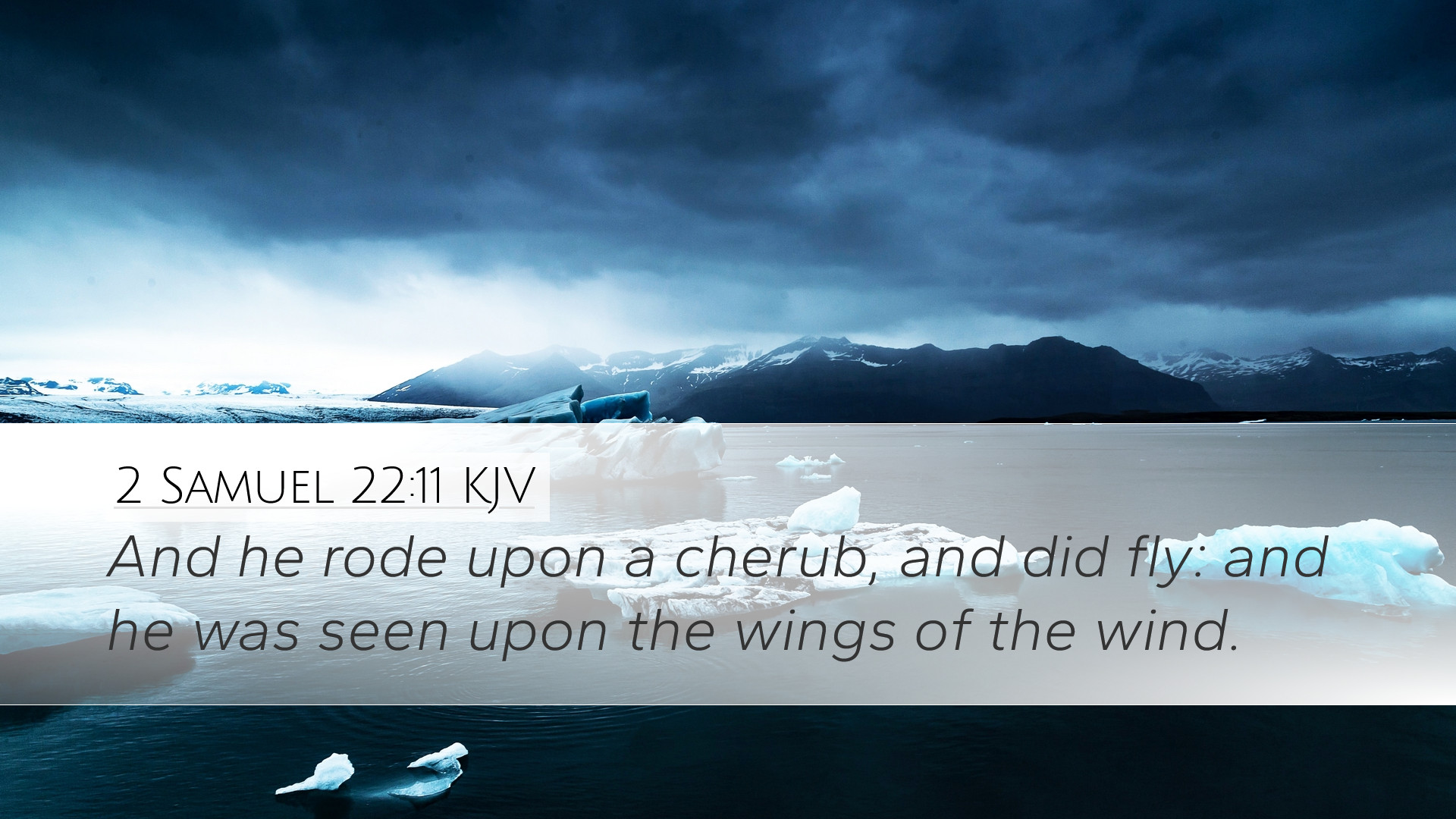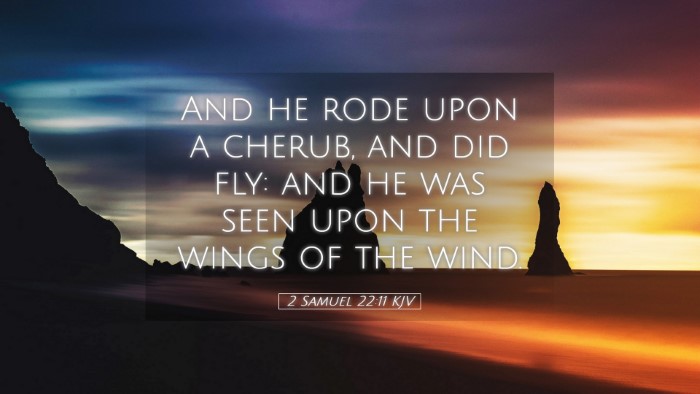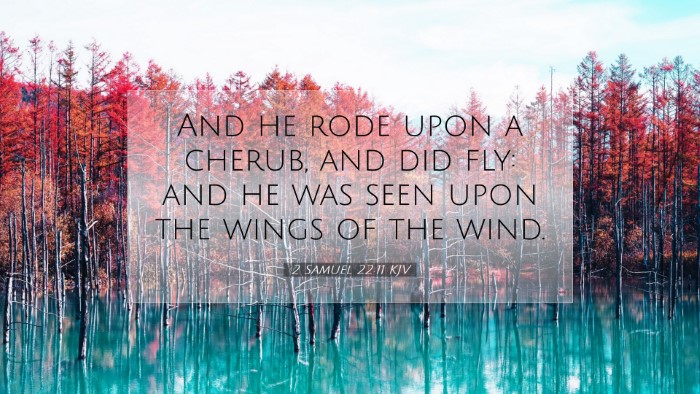Commentary on 2 Samuel 22:11
Verse Text: "He rode upon a cherub, and did fly: and he was seen upon the wings of the wind."
Introduction
2 Samuel 22:11 is a powerful verse that encapsulates both the majesty and the mystery of God's presence, particularly in the life of David. This verse, within the context of David's song of deliverance, illustrates God's sovereignty and divine intervention. The imagery used in this passage reflects ancient Near Eastern motifs, bringing forth profound theological insights that are pertinent for pastors, students, theologians, and scholars.
Thematic Overview
- Divine Sovereignty: The act of God riding upon a cherub signifies His supreme authority over all creation.
- Divine Presence: The metaphor of flight points to God's active involvement in the world and His ability to transcend physical limits.
- Protection and Deliverance: This passage serves to remind believers of God's capacity to deliver His people from perilous situations.
Commentary Insights
1. God’s Majestic Imagery
Matthew Henry observes that the image of God riding on a cherub reflects His glory and the celestial nature of His reign. The cherubim, often seen as guardians of the divine presence, symbolize the holy and mysterious aspects of God’s being. This visual conveys not only His majesty but also His readiness to engage with His people in their times of struggle.
2. The Significance of Flight
Albert Barnes comments on the metaphor of God's flight on the wings of the wind. This imagery illustrates God’s swift and effective action on behalf of His people. It signifies that God's help may come when least expected, emphasizing His omnipresence and the immediacy with which He can respond to the cries of His people.
3. Theological Implications
Adam Clarke discusses the theological implications of this passage by highlighting God’s transcendence and immanence. Although God is above all (riding on the cherub), He engages intimately with creation (flying upon the wings of the wind). This duality invites believers to recognize both God's grandeur and His proximity in times of distress.
4. Historical Context
In the historical context of David's life, this verse is a reflection of his experiences of divine deliverance from enemies. The invocation of cherubic imagery would resonate with an audience familiar with the cultural and spiritual significance of these beings within Israel’s worship and artistic expressions.
Practical Applications
- Encouragement During Trials: This verse serves as an assurance to believers that God is ever present and ready to aid them in difficult times.
- Worship and Reverence: The imagery encourages reverence in worship where acknowledgment of God’s might and mercy is central.
- Trust in Action: Believers are called to trust in God's active presence in their lives, fostering a reliance on His power rather than their own.
Conclusion
2 Samuel 22:11 encapsulates a powerful theological truth about God's nature and His relationship with humanity. Through this verse, we are reminded of the divine majesty that oversees our lives, offering both comfort and a call to worship. Pastors, students, and scholars alike can draw from this rich tapestry of meaning to deepen their understanding of God's action in the world and in their personal journeys of faith.


